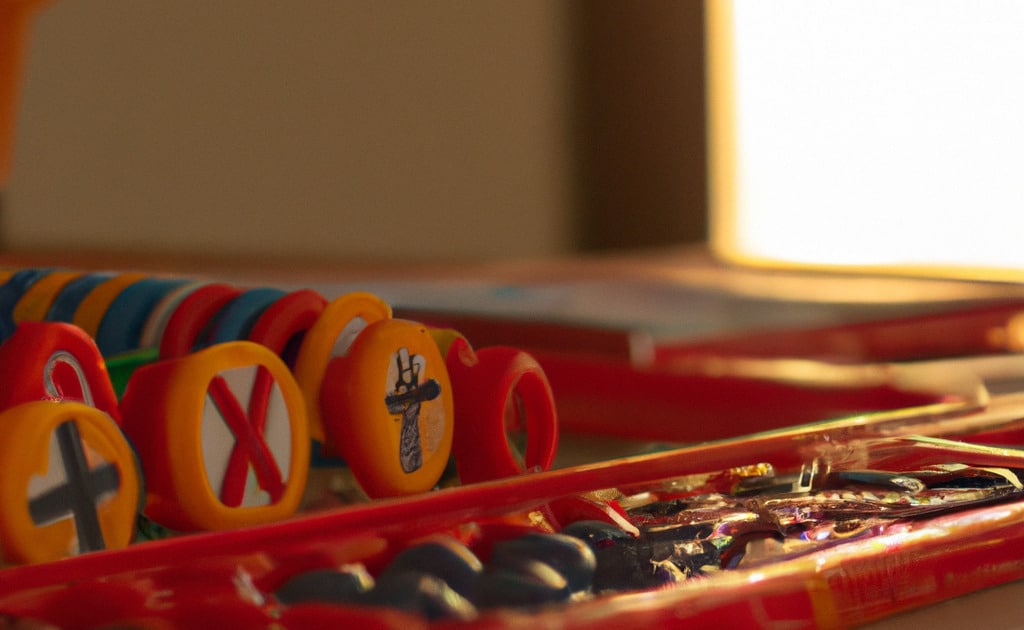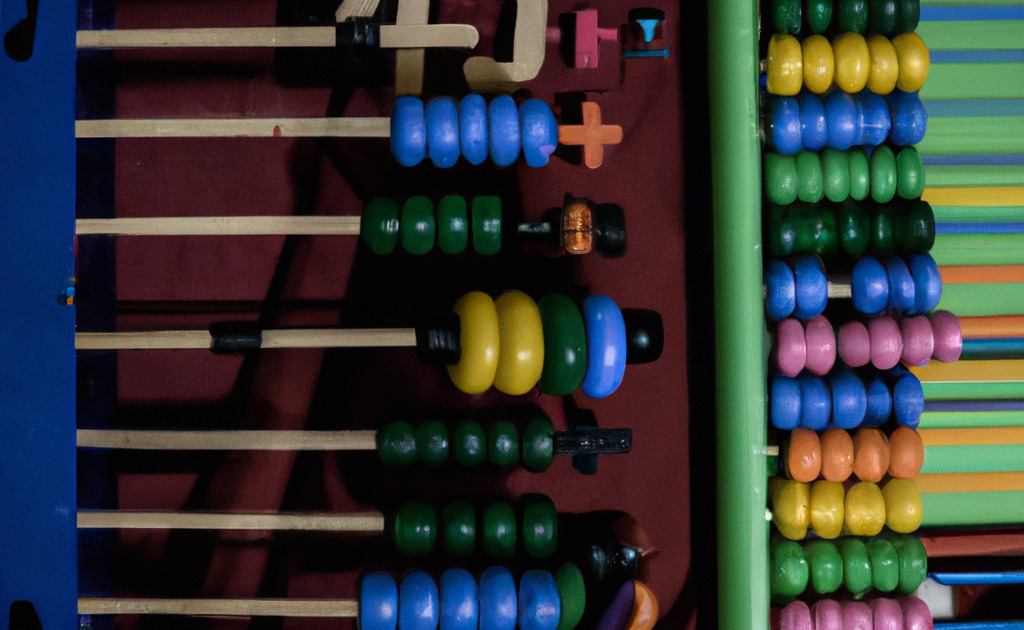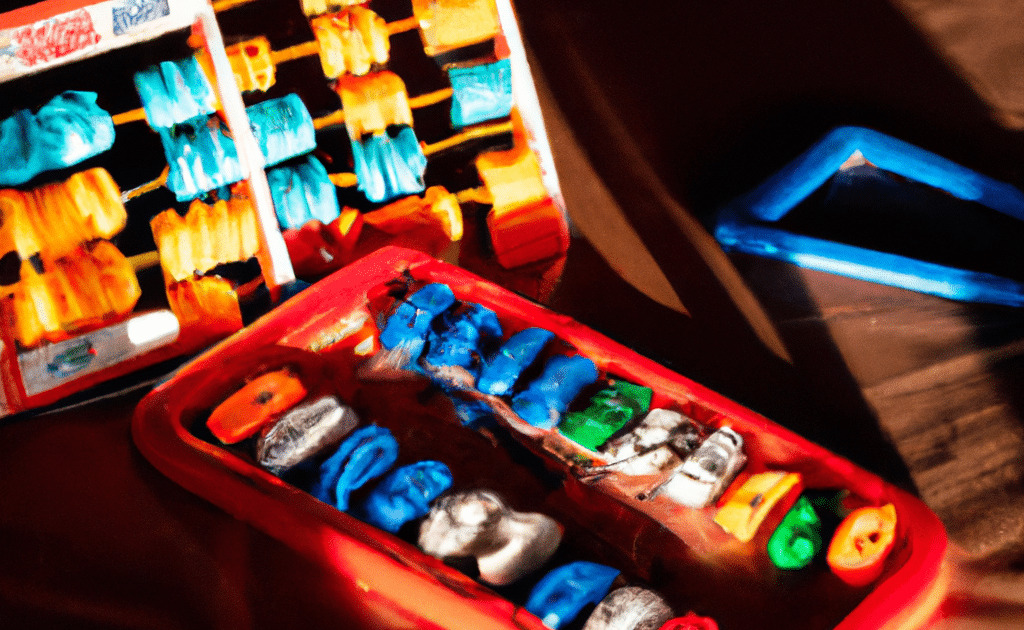In the world of educational toys, there is one tool that stands out for its versatility and ability to bring the wonders of mathematics to life: the measuring tape.
While it may seem like a simple tool used for measuring distances, the measuring tape has the power to engage young minds in a world of numbers, shapes, and problem-solving.
In this article, we will explore the fascinating world of measuring tapes as educational toys, uncovering their benefits, and discovering how they can make learning mathematics a fun and interactive experience.
So, grab your measuring tape and get ready to embark on a mathematical adventure like no other!
The Basics of Measuring Tape
Before we delve into the educational aspects of measuring tapes, let’s first understand the basics of this versatile tool. A measuring tape is a flexible ruler that consists of a ribbon of cloth, plastic, or metal strip with linear measurement markings. It is typically housed in a compact case, making it easy to carry and store. The tape can be extended and retracted using a mechanism inside the case, allowing for accurate measurements of various lengths.
Measuring tapes come in different lengths, ranging from a few feet to several meters. The most common unit of measurement found on a tape is inches or centimeters, but some tapes also include additional units such as feet or meters. This variety in measurements allows children to explore different numerical systems and develop a deeper understanding of the concept of length.
One of the key features of a measuring tape is its flexibility. Unlike a rigid ruler, a measuring tape can bend and curve around objects, making it ideal for measuring irregular shapes or objects with curved surfaces. This flexibility encourages children to think creatively and problem-solve as they figure out the best way to measure an object accurately.
Another important aspect of measuring tapes is the presence of markings or graduations along the tape. These markings indicate specific units of measurement and help children understand the concept of measurement precision. By observing and counting the markings, children can learn to estimate and measure lengths with increasing accuracy.
Measuring tapes also often include additional features that enhance their educational value. Some tapes have markings for fractions, allowing children to explore the relationship between whole numbers and fractions. Others may have markings for angles, introducing basic geometry concepts. These additional features provide opportunities for children to explore different mathematical concepts beyond just length.
Now that we have covered the basics of measuring tapes, let’s dive into the educational benefits they offer and how they can be used to make learning mathematics a fun and interactive experience.

Enhancing Numerical Skills
Measuring tapes are excellent tools for developing numerical skills in children. By using a measuring tape, children can practice counting, comparing, and estimating lengths. They can learn to identify and understand different numerical units, such as inches, centimeters, or feet, and how they relate to one another.
For younger children, measuring tapes can be used to introduce basic counting skills. They can count the markings on the tape, helping them develop number recognition and sequencing abilities. As they progress, they can learn to count by different units, such as counting by twos or fives, further strengthening their number sense.
Comparing lengths is another important skill that can be honed using measuring tapes. Children can measure different objects and compare their lengths, determining which is longer or shorter. This activity helps them understand the concept of measurement and develop their ability to make comparisons based on numerical values.
Estimation is a crucial skill in mathematics, and measuring tapes provide an excellent opportunity for children to practice it. They can estimate the length of an object before measuring it with the tape, and then compare their estimation with the actual measurement. This process allows them to refine their estimation skills and develop a better understanding of the relationship between numbers and physical quantities.
Measuring tapes also encourage children to think critically and problem-solve. They may encounter situations where they need to measure objects that are longer than the tape itself. In such cases, they can learn to measure in parts and add the measurements together to find the total length. This process fosters logical thinking and helps children develop strategies for solving complex measurement problems.
In addition to numerical skills, measuring tapes also promote spatial awareness and geometry concepts. Let’s explore this aspect further in the next section.
Spatial Awareness and Geometry Exploration
Measuring tapes provide an excellent opportunity for children to develop spatial awareness and explore geometry concepts. By measuring the lengths of different objects and comparing their sizes, children can begin to understand the concepts of length, width, and height.
They can also use measuring tapes to explore perimeter and area. For example, they can measure the sides of a square or rectangle and then calculate the perimeter by adding all the lengths together. Similarly, they can measure the length and width of a rectangle and multiply them to find the area. These hands-on activities allow children to visualize and understand the relationship between different geometric properties.
Measuring tapes can also be used to introduce the concept of angles. Some measuring tapes have markings for angles, allowing children to measure and compare different angles. They can explore the properties of right angles, acute angles, and obtuse angles, and learn to identify and measure them using the tape. This early exposure to angles lays the foundation for more advanced geometry concepts in the future.
Furthermore, measuring tapes can be used to introduce the concept of scale. Children can measure the lengths of different objects and then create a scaled-down version using a smaller unit of measurement. For example, they can measure the length of a table and then create a scaled-down model using centimeters instead of meters. This activity helps children understand the concept of proportion and scale, which are fundamental in many areas of mathematics and science.
Measuring tapes also promote spatial reasoning skills. Children can use the tape to measure and compare the heights of different objects, helping them develop an understanding of spatial relationships and size. They can also use the tape to measure the distance between objects, enhancing their ability to visualize and navigate in space.
In addition to spatial awareness and geometry, measuring tapes can be used to explore other mathematical concepts such as fractions and ratios. Some measuring tapes have markings for fractions, allowing children to measure and compare fractional lengths. They can learn to identify and understand different fractions, such as halves, quarters, or eighths, and how they relate to the whole.
Overall, measuring tapes offer a wide range of opportunities for children to engage in hands-on exploration of mathematical concepts. They provide a tangible and interactive way for children to develop numerical skills, spatial awareness, and geometry understanding. By incorporating measuring tapes into educational activities and games, educators and parents can make learning mathematics a fun and engaging experience for children.
In conclusion, measuring tapes are not just tools for measuring lengths; they are powerful educational toys that can unleash the wonders of mathematics through play. From developing numerical skills to promoting spatial awareness and exploring geometry concepts, measuring tapes offer a multitude of learning opportunities for children.
By engaging with measuring tapes, children can practice counting, comparing, and estimating lengths, enhancing their numerical abilities. They can also develop spatial awareness by measuring and comparing the sizes of different objects, as well as explore geometry concepts such as perimeter, area, and angles.
The flexibility and versatility of measuring tapes allow children to think creatively and problem-solve as they encounter various measurement challenges. They learn to adapt and find alternative ways to measure objects that may exceed the length of the tape, fostering critical thinking skills.
Furthermore, measuring tapes provide a hands-on and interactive approach to learning mathematics. Children can physically manipulate the tape, observe the markings, and make connections between numerical values and physical quantities. This tangible experience helps solidify their understanding of mathematical concepts and encourages a deeper engagement with the subject.
Educators and parents can incorporate measuring tapes into educational activities and games to make learning mathematics enjoyable and exciting. By turning measurement tasks into fun challenges, children can develop a positive attitude towards math and see it as a fascinating and practical tool in their everyday lives.
So, the next time you see a measuring tape, don’t just see it as a tool for construction or DIY projects. Embrace its educational potential and unleash the power of mathematics through play. Let your child embark on a mathematical adventure filled with exploration, discovery, and endless learning possibilities.
Can you imagine the endless possibilities of learning and discovery that await when you combine the simplicity of a measuring tape with the complexity of mathematics?

Science kits are another educational tool that can captivate young minds and foster a love for scientific exploration. With hands-on experiments and activities, children can delve into various scientific concepts and develop critical thinking skills. From chemistry sets to biology kits, these science kits provide a holistic approach to learning and can complement the educational benefits of measuring tapes. Science Kits

Language learning toys offer a fun and interactive way for children to develop their language skills. Word formation games, in particular, can enhance vocabulary, spelling, and grammar. By engaging in word puzzles and challenges, children can strengthen their linguistic abilities and expand their knowledge of language. Incorporating language learning toys alongside measuring tapes can create a well-rounded educational experience for children. Language Learning Toys

Educational puzzles, such as reading puzzles, can be a valuable tool for enhancing literacy skills through play. These puzzles encourage children to practice reading comprehension, word recognition, and problem-solving. By combining the interactive nature of puzzles with the educational benefits of measuring tapes, children can engage in a multi-dimensional learning experience that promotes both mathematical and literacy skills. Educational Puzzles


